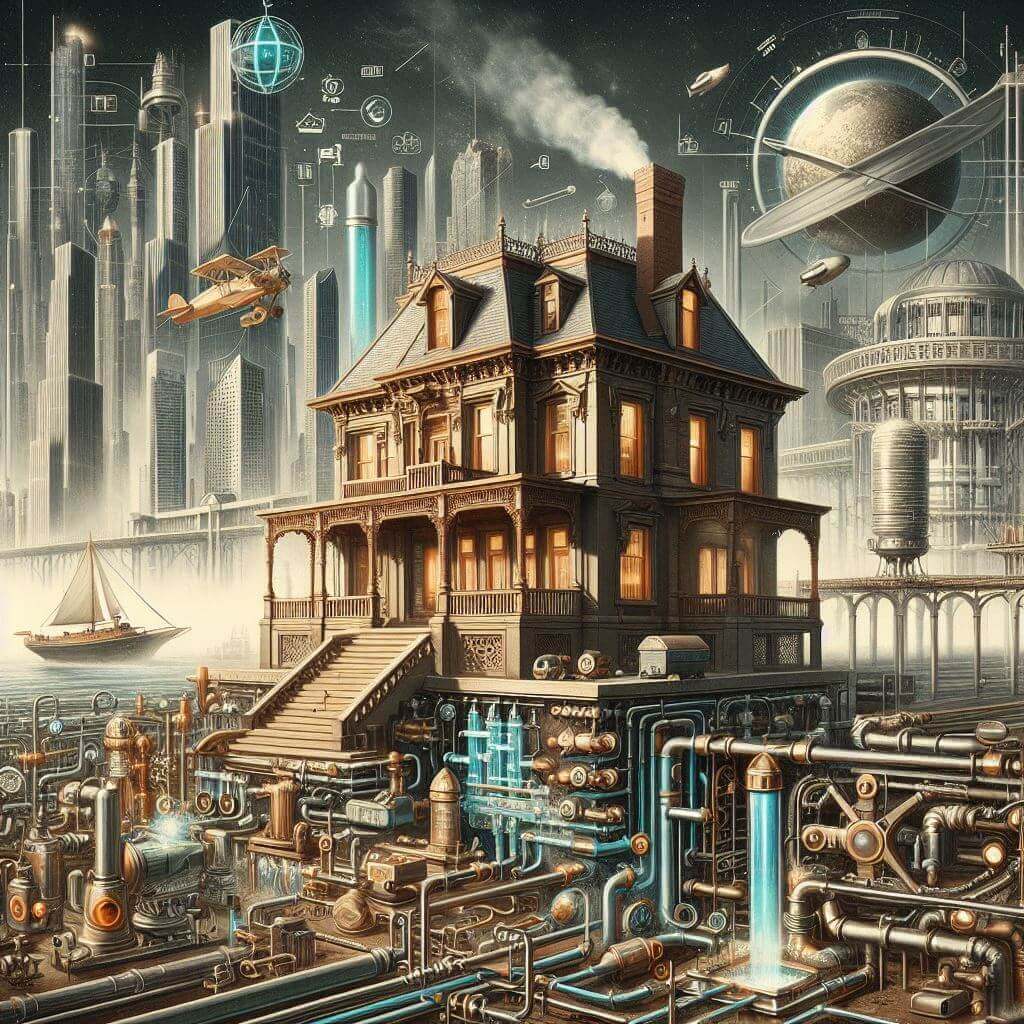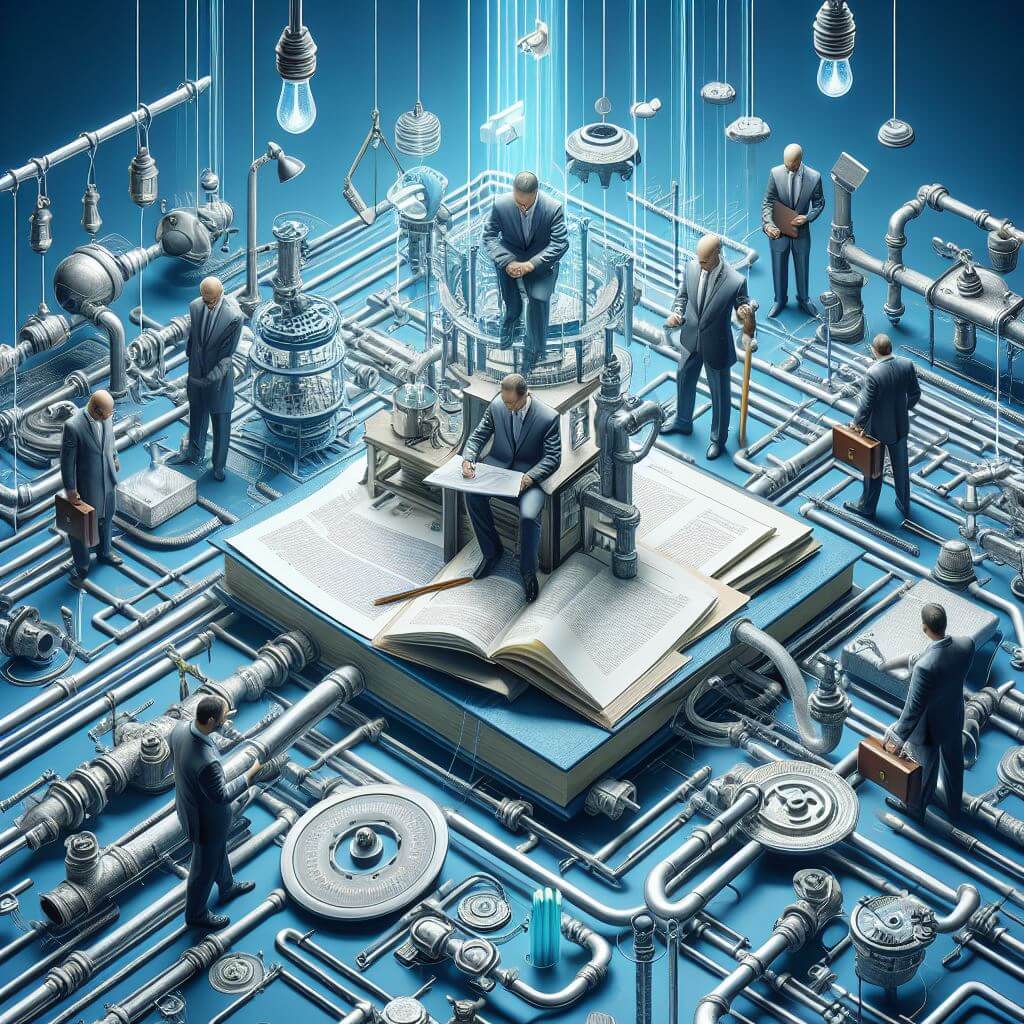Future House Plumbing Standards: Innovations, Insights, and Evolution
Evolution of Plumbing Standards: A Historical Perspective
Understanding the evolution of plumbing standards unveils a narrative of continual adaptation. From ancient aqueducts to modern, intricate systems, the journey of plumbing standards evolution showcases humanity’s quest for better living conditions. The paradigm shift from basic conduits to intricate networks mirrors society’s progression. Historical insights reveal the ever-evolving nature of house plumbing innovations and the necessity of adapting to changing times.
Expert Insights on Plumbing: Embracing Change
Expert insights in the realm of plumbing offer a profound understanding of the dynamic landscape and the necessity for continual adaptation. Plumbing experts emphasize the significance of staying abreast of the evolution of plumbing standards to ensure safety and efficiency in residential spaces. Their recommendations revolve around embracing innovation while adhering to changing house plumbing regulations.
These insights shed light on the need for modernizing plumbing codes to align with emerging technologies and sustainable practices. As experts delve into the intricacies of future-proof plumbing practices, they stress the importance of integrating advanced plumbing technologies to optimize functionality and promote environmental consciousness. Moreover, their guidance underscores the pivotal role of homeowners in adopting upcoming trends in plumbing for enhanced efficiency and eco-friendly living.
Transitioning from conventional plumbing practices to a more futuristic approach involves a paradigm shift. This shift necessitates a comprehensive understanding of smart home plumbing and the integration of IoT in plumbing systems. Plumbing experts advocate for the installation of water-efficient fixtures as a step towards conservation without compromising functionality.
The insights shared by experts also revolve around the integration of sustainable plumbing solutions. Emphasizing green plumbing practices and incorporating renewable materials in plumbing represents a conscientious effort toward environmental preservation. Additionally, experts highlight the importance of water conservation in plumbing, urging homeowners to embrace eco-conscious practices in their plumbing systems.
Ultimately, these expert insights serve as a compass, guiding homeowners toward a more efficient, sustainable, and future-ready plumbing infrastructure. Their comprehensive recommendations not only prioritize innovation and technological advancements but also underscore the significance of regulatory compliance and environmental stewardship in the ever-evolving landscape of house plumbing standards.
The Current Landscape: Advanced Plumbing Technologies
In the current landscape, the domain of plumbing is witnessing a transformative phase propelled by advanced plumbing technologies. This evolution encompasses a spectrum of innovations designed to enhance efficiency, convenience, and sustainability within residential spaces. The integration of smart home plumbing and the utilization of IoT in plumbing systems stand as pivotal advancements shaping the contemporary plumbing ecosystem.
One of the standout features of this modernization is the introduction of water-efficient fixtures. These fixtures not only reduce water consumption but also align with the global call for water conservation in plumbing. Through sensor-based technologies and optimized designs, these fixtures epitomize the fusion of innovation and eco-consciousness, offering homeowners a practical avenue for reducing their environmental footprint.
Moreover, the integration of digitalization in plumbing facilitates heightened control and monitoring capabilities. From real-time leak detection to personalized usage insights, these digital advancements empower homeowners with information and control over their plumbing systems. This not only promotes efficiency but also fosters a proactive approach towards maintenance and conservation.
The embrace of sustainable plumbing solutions is another hallmark of this landscape. Emphasizing green plumbing practices and the integration of renewable materials in plumbing underscores a commitment to environmental responsibility. As technology progresses, the integration of eco-friendly materials and practices becomes increasingly accessible, offering homeowners an array of options to align their plumbing systems with sustainability goals.
The current landscape of plumbing is characterized by a convergence of technology, sustainability, and efficiency. The infusion of advanced plumbing technologies not only redefines convenience but also empowers homeowners to contribute to a more sustainable future through their plumbing choices. As these innovations continue to evolve, the modernization of residential plumbing promises a landscape that balances functionality, innovation, and environmental consciousness.
Sustainable Plumbing Solutions: A Paradigm Shift
The emergence of sustainable plumbing solutions marks a significant paradigm shift in the way we approach residential plumbing. This shift is propelled by a global consciousness toward environmental preservation and resource conservation. Embracing green plumbing practices signifies a departure from conventional methods, emphasizing a harmonious coexistence between functionality and sustainability.
Central to these sustainable solutions is the integration of renewable materials in plumbing. Materials like bamboo, recycled steel, and PEX piping present eco-friendly alternatives that reduce the environmental impact of plumbing systems. Their durability and recyclability not only contribute to sustainability but also ensure longevity and reliability in residential infrastructure.
Moreover, the emphasis on water conservation in plumbing represents a fundamental tenet of sustainable plumbing. From low-flow fixtures to smart irrigation systems, these solutions prioritize water efficiency without compromising performance. Homeowners adopting these measures not only contribute to water conservation efforts but also experience tangible reductions in utility bills, making it a win-win situation.

The integration of water-efficient fixtures also plays a pivotal role in sustainable plumbing solutions. From faucets to toilets and showerheads, these fixtures are designed to optimize water usage without sacrificing user experience. Their innovation lies in technology that regulates flow rates while maintaining functionality, showcasing the fusion of innovation and conservation in plumbing design.
Embracing sustainable plumbing solutions heralds a future where residential plumbing systems are not only efficient but also eco-conscious. The shift toward sustainability not only benefits the environment but also offers homeowners cost-effective solutions and the satisfaction of contributing to a greener, more sustainable world. As these practices continue to evolve, their accessibility and integration will likely become more prevalent, shaping the future of residential plumbing.
The Intersection of Hygiene and Innovation in Plumbing
The intersection of hygiene and innovation in plumbing underscores a crucial aspect of modern residential living. As technology evolves, the focus on maintaining hygienic piping standards becomes paramount. Innovative solutions not only optimize water distribution but also prioritize cleanliness and health within homes.
Incorporating digitalization in plumbing brings forth a new era of cleanliness. IoT-enabled sensors and monitoring systems facilitate proactive measures, detecting potential contaminants or issues within the plumbing network. This ensures a higher level of hygiene, offering peace of mind to homeowners regarding their water quality.
Moreover, the integration of advanced technologies not only enhances cleanliness but also safeguards against potential health hazards. From antimicrobial piping materials to UV disinfection systems, these innovations mitigate the risk of bacterial growth or waterborne illnesses, elevating the overall hygiene standards of residential plumbing systems.
The evolving landscape of hygienic piping standards underscores the importance of regular maintenance and proactive measures. Homeowners can adopt simple practices like scheduled inspections, timely repairs, and using approved materials to maintain cleanliness. These small steps contribute significantly to ensuring a hygienic environment within the plumbing infrastructure.
The amalgamation of innovative technologies and a focus on hygiene in house plumbing systems heralds a new era of cleanliness and health-conscious living. By embracing these advancements, homeowners not only enhance their quality of life but also contribute to a safer and more hygienic living environment for their families. As these technologies continue to advance, maintaining high hygiene standards in residential plumbing will become increasingly streamlined and accessible.
Smart Home Integration: Revolutionizing Residential Plumbing
The integration of smart home technology has sparked a revolution in the realm of residential plumbing. This paradigm shift goes beyond mere functionality, offering homeowners unprecedented control and efficiency in managing their plumbing systems. The marriage of IoT in residential plumbing represents a leap towards a more connected, automated, and convenient living experience.
With IoT-enabled plumbing systems, homeowners gain real-time insights into water usage, leak detection, and even temperature control. These smart devices not only enhance convenience but also empower users to monitor and manage their plumbing remotely, ensuring proactive maintenance and minimizing potential issues.
Furthermore, the synergy between smart home integration and plumbing systems goes hand in hand with resource conservation. Water-efficient fixtures, when integrated into smart home setups, allow for precise control over water consumption. Automated features like shut-off valves in case of leaks or intelligent irrigation systems contribute to efficient water management.
The advent of connected home plumbing technologies not only streamlines daily tasks but also fosters a more sustainable lifestyle. By providing actionable data and control, these systems enable homeowners to make informed decisions, reducing water wastage and contributing to a more eco-conscious living space.
Future-Proofing Homes: Innovations in Plumbing Technology
Future-proofing homes with innovative plumbing technology is a proactive approach to staying ahead in the ever-evolving landscape of residential living. As plumbing standards adaptation continues to evolve, homeowners are presented with an array of advancements that fortify their homes for the future. Embracing these innovations ensures not just functionality but also resilience in the face of changing norms and regulations.
The essence of preparing houses for upcoming plumbing changes lies in integrating cutting-edge technologies. From sensor-based leak detection systems to smart water usage monitors, these innovations empower homeowners to preempt potential issues, minimizing risks and ensuring optimal performance of their plumbing systems.
Moreover, the adoption of advanced plumbing technologies doesn’t merely address current needs but also anticipates future challenges. The incorporation of durable and adaptable materials and systems ensures longevity, reducing the need for frequent upgrades or replacements in the long run.
Future-proofing homes also entails a conscious effort towards securing homes with innovative plumbing while balancing functionality and regulatory compliance. Adapting to these changes requires a proactive mindset, where homeowners and professionals collaborate to integrate solutions that cater to evolving standards without compromising efficiency or safety.
Striking a Balance: Water Conservation and Efficiency
Maintaining a delicate equilibrium between water conservation and efficiency is pivotal in optimizing residential plumbing systems. Striking this balance involves adopting water-efficient fixtures without compromising functionality. These fixtures, such as low-flow faucets and high-efficiency toilets, reduce water consumption while ensuring adequate performance in everyday tasks.
Furthermore, the integration of water-saving plumbing devices isn’t solely about reducing usage; it’s also about managing water more effectively. Technologies like smart irrigation controllers or greywater recycling systems optimize water distribution, minimizing waste and maximizing utility. This convergence of innovation and conservation contributes significantly to sustainable water management.
Balancing water conservation and efficiency in residential plumbing also necessitates a shift in consumer behavior and mindset. Simple habits like fixing leaks promptly, using water responsibly, and embracing conservation-oriented practices amplify the impact of water-efficient fixtures. This collective effort not only reduces water bills but also mitigates the strain on water resources, contributing to a more sustainable environment.
Finding a harmonious interplay between water conservation and efficiency in residential plumbing is a multifaceted approach. By incorporating both technological advancements and conscientious practices, homeowners can significantly reduce their water footprint while ensuring a reliable and efficient plumbing system. As these strategies become more accessible and integrated, striking this balance will become an inherent part of sustainable living.
Rethinking Traditional Practices: The Path Forward
The journey towards rethinking traditional plumbing practices for future homes involves a comprehensive reevaluation. Revolutionizing house piping methods necessitates innovative approaches aligned with evolving societal needs. As we navigate this transformative phase, embracing novel solutions becomes pivotal for crafting a sustainable and efficient plumbing landscape.
The trajectory of plumbing standards evolution is a testament to human adaptability and innovation. With an emphasis on sustainability, technological integration, and regulatory compliance, the future promises a plumbing landscape that not only meets the needs of modern homes but also champions efficiency and environmental consciousness. As we navigate the dynamic realm of house plumbing innovations, the synergy between tradition and innovation paves the way for a more connected, sustainable, and efficient future.





